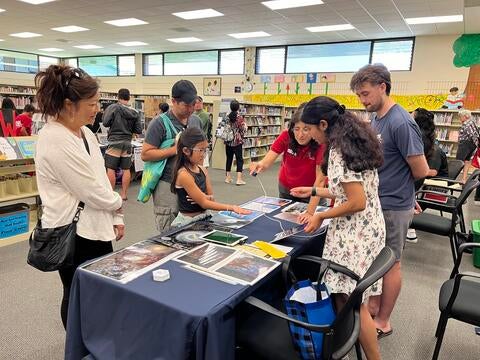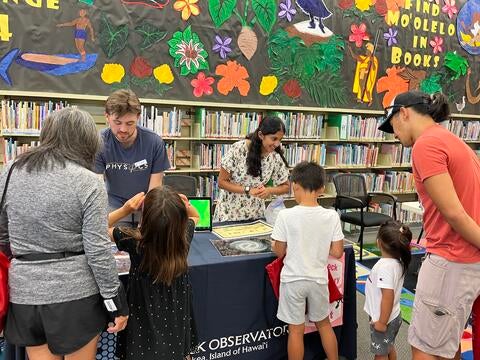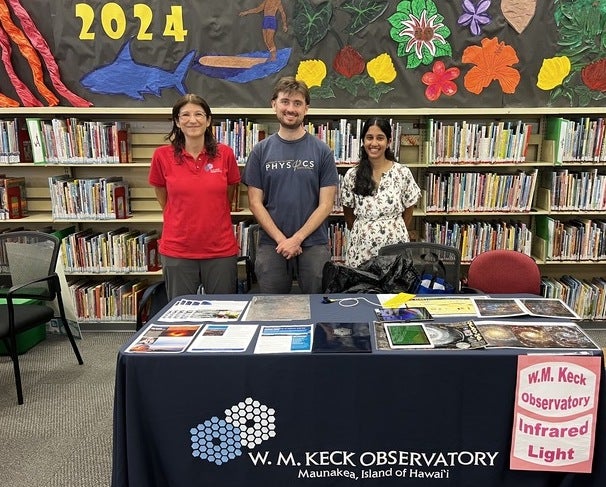The love of astronomy begins in childhood. With that in mind, three UC Riverside astronomers gave a talk on what infrared radiation is and how telescopes use it to hundreds of children on the Big Island of Hawaii on August 3.

Infrared radiation is part of the electromagnetic spectrum that lies between visible light and radio waves. Invisible to the human eye, it can be perceived as heat. By detecting wavelengths in the near and mid-infrared range, telescopes like the James Webb Space Telescope can reveal to astronomers objects in the universe that are invisible to optical telescopes.
“We participated in AstroBash in Waimea, a four-hour event where several groups presented exhibits about telescopes or astronomy,” said Gabriela Canalizo, a professor of physics and astronomy at UCR, who attended the event along with her graduate students Michael McDonald and Archana Aravindan. “We represented the WM Keck Observatory and gave the audience an infrared demo. We love hosting events like this and make it a point to maintain good relationships with the community in Hawaii.”
More than 300 children – from toddlers to teens – and adults participated in AstroBash, a NASA@My Library event organized by the Thelma Parker Memorial Public Library. Canalizo’s team volunteered for the astronomy celebration as part of the Pilina and Kōkua Initiative, a collaboration between the Keck Observatory in Hawaii, Caltech Optical Observatories, and the University of California Observatories, to build a deeper connection to the island of Hawaii. The hands-on activity put together by Canalizo and her students, titled “The Magic of Infrared,” caught everyone’s attention.

During the demonstration, infrared cameras were attached to iPads. Objects, such as the hands of a person waving around in a black garbage bag, were visible on the iPads as infrared images but were not visible to the naked eye. As Canalizo ran her fingers across a table, the fingerprints she left behind were captured by the infrared cameras.
“The children were particularly excited about the little ‘footprints’ on the table,” she said. “We were able to talk to them about infrared and the observations that the James Webb Space Telescope can make with it. We look forward to doing more of these things in the future.”
Matthew Shetrone, deputy director of the University of California Observatories, said face-to-face connections are essential to sharing scientific knowledge with the public and encouraging meaningful engagement in astronomy among local communities. Astronomers have developed a habit, he added, of observing the Keck I and Keck II telescopes from their remote observing stations or from their homes on computers.
“This separates us from both the Keck staff and the communities in the Hawaiian Islands,” he said. “UC Observatories funds observers like Dr. Canalizo and her team to conduct their science in the Hawaiian Islands and to specifically engage with local communities. AstroBash was the first such event hosted by UC Observatories. We plan to have more observer groups participate in the Pilina and Kōkua initiative this year.”
Canalizo and McDonald were supported by the Pilina and Kōkua Initiative. Aravindan was supported by a UCR fellowship.

